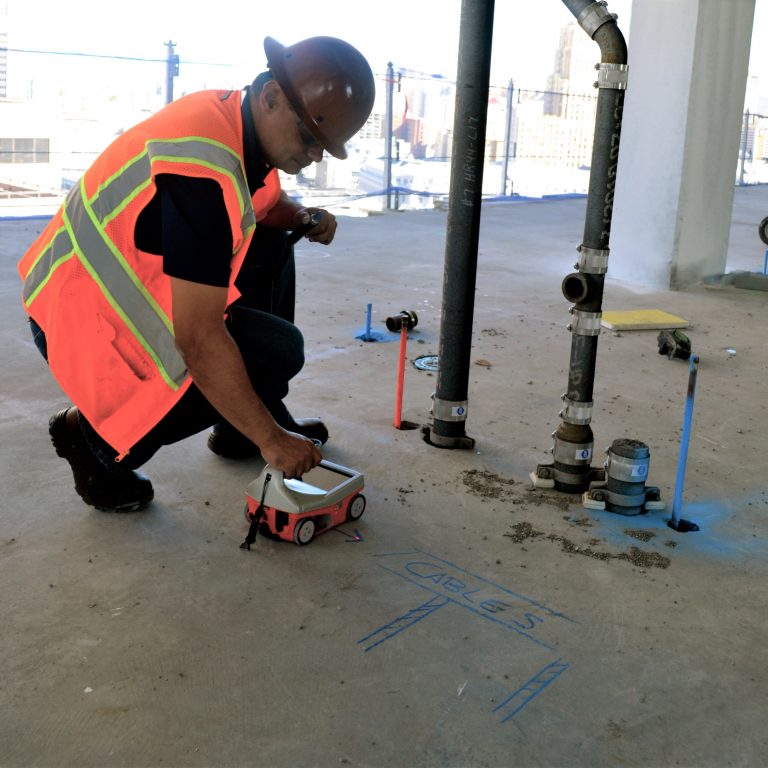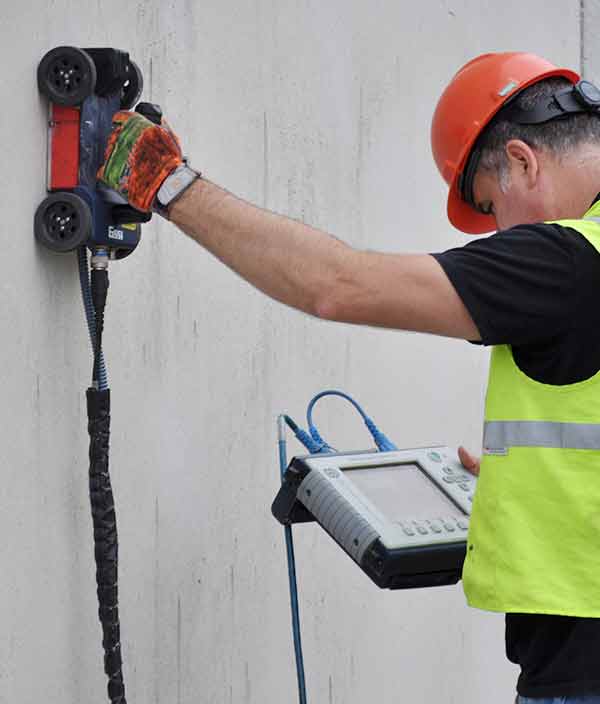Boost Your Task with RainierGPR Concrete Scanning Solutions
Boost Your Task with RainierGPR Concrete Scanning Solutions
Blog Article
Optimizing Efficiency and Lessening Threats: The Duty of Concrete Scanning in Building And Construction
In the world of construction, where accuracy and safety are vital, the usage of concrete scanning innovation has actually become an important tool for job supervisors and engineers alike. By utilizing innovative scanning techniques, building groups can browse complex settings with enhanced performance while minimizing possible risks that might endanger both timelines and budget plans. The complex dance in between making the most of efficiency and decreasing dangers in construction depend upon the capacity to peer underneath the surface, exposing a world of hidden barriers and opportunities. The duty of concrete scanning in this fragile equilibrium is not simply helpful however transformative, providing a peek right into a future where costly errors are preempted, safety and security is prioritized, and quality is non-negotiable.

Value of Concrete Scanning
Concrete scanning plays a vital role in making certain the architectural honesty and safety of construction tasks by precisely spotting embedded things and potential dangers within concrete frameworks. By utilizing various scanning modern technologies such as ground-penetrating radar (GPR) and electromagnetic induction, building and construction groups can identify rebar, post-tension wires, avenues, and various other concealed challenges prior to drilling, cutting, or coring into concrete. This positive approach assists avoid costly damages, injuries, and task hold-ups that might occur from mistakenly striking these items during building tasks.
In addition, the accurate mapping of ingrained items ensures the reliable execution of building plans, lessening the threat of errors and ensuring the long life and longevity of the built environment. Eventually, spending in concrete scanning services contributes to the general success and safety of building projects.

Advanced Innovation in Construction
Offered the raising demand for accuracy and performance in construction techniques, the assimilation of innovative technology has become critical in enhancing job outcomes and guaranteeing ideal precaution - RainierGPR Concrete Scanning. One considerable advancement is Building Information Modeling (BIM), a digital depiction of a structure's functional and physical qualities. BIM allows for better partnership amongst stakeholders, enhanced visualization of the task, and enhanced decision-making throughout the building and construction process. In addition, using drones in construction has transformed site surveys, development tracking, and evaluations. Drones give real-time data, enhance safety by decreasing the demand for workers to accessibility high-risk areas, and improve total job tracking. Additionally, the implementation of Increased Fact (AR) and Online Fact (VIRTUAL REALITY) innovations in building and construction design and drawing board allows stakeholders to visualize the end product, identify possible concerns, and make needed modifications prior to building and construction starts. These technologies enhance processes, minimize errors, and ultimately add to a lot more effective and much safer building practices.

Advantages of Item Mapping
The usage of things mapping technology in building and construction projects provides a plethora of advantages that enhance project planning and execution. One of the key benefits of things mapping is its capability to offer precise and comprehensive info regarding the area of below ground energies, structural elements, and other items within the building site. This details is crucial for guaranteeing that excavation and exploration tasks are lugged out securely and successfully, minimizing the risk of damages to existing framework.
Additionally, things mapping innovation enables building teams to produce precise 3D models of the website, allowing for far better visualization of the job and improved coordination amongst various trades - RainierGPR Concrete Scanning. This improved spatial understanding helps to identify potential clashes and conflicts early in the planning stages, reducing the need for expensive rework and delays during building and construction
Moreover, object mapping can also streamline the paperwork process by supplying electronic records of the site before, during, and after building. These records function as valuable referrals for future upkeep and restoration jobs, ultimately improving the long-term efficiency and sustainability of the built environment.
Stopping Pricey Errors
Object mapping technology's role in construction extends past enhancing job planning and execution to include a critical facet: avoiding pricey mistakes. By using sophisticated concrete scanning strategies, construction groups can recognize potential threats such as rebar blockage, post-tension cords, or voids within concrete frameworks. Detecting these issues early helps in avoiding pricey errors throughout the building and construction process. For example, hitting a post-tension cable television during boring can result in architectural damages, hold-ups, and raised prices for repair work. Additionally, precisely mapping out existing utilities underground can stop unintended damage during excavation, saving both time and money. Moreover, by making use of things mapping technology, building groups can make sure that structure components are installed in the right places, reducing the chance of rework or retrofitting because of lost elements. Generally, the positive usage of concrete scanning innovations in construction tasks considerably lessens the risk of mistakes and ultimately contributes to set you back savings and job effectiveness.
Ensuring Safety and High Quality
To promote the highest requirements of safety and security and top quality in construction projects, the application of concrete scanning modern technology plays a critical function. By utilizing sophisticated scanning techniques such as ground-penetrating radar (GPR) and electro-magnetic induction, building teams can discover prospective threats hidden within concrete structures before commencing any type of work. This aggressive approach not only decreases the risk of mishaps on the construction site yet likewise ensures the architectural stability of the structure.
Concrete scanning likewise helps in validating the positioning of rebar, avenues, and post-tension cable televisions, ensuring that these aspects are appropriately placed according to the style requirements. This accuracy in helpful resources situating essential parts aids prevent errors during the building and construction process, inevitably leading to a higher high quality ended up product. Furthermore, by recognizing any type of anomalies or inconsistencies within the concrete beforehand, needed changes can be made without delay, decreasing the chance of rework and costly delays.
Fundamentally, concrete scanning technology works as an important device in securing both the safety and security of construction workers and the total top quality of the developed atmosphere. Its capability to spot prospective threats and make certain adherence to layout requirements makes it an indispensable property in contemporary building techniques.

Verdict
In conclusion, concrete scanning plays an important function in making the most of performance and minimizing dangers in construction tasks. By making use of innovative innovation for object mapping, official statement prospective pricey blunders can be protected against, guaranteeing safety and security and quality of the last framework. It is important for building companies to prioritize the use of concrete scanning to enhance productivity, reduce dangers, and deliver top notch cause their jobs.
Concrete scanning plays a critical duty in making certain the architectural stability and security of building and construction projects by precisely spotting ingrained things and potential threats within concrete structures. The application of Increased Reality (AR) and Digital Truth (VIRTUAL REALITY) innovations in construction layout and planning phases enables stakeholders to picture the final product, recognize prospective concerns, and make needed changes before building begins. By utilizing sophisticated concrete scanning strategies, building and construction teams can determine prospective dangers such as rebar blockage, post-tension cords, or voids within concrete frameworks. On the whole, the positive use of concrete scanning technologies in construction tasks substantially reduces the danger of mistakes and eventually adds to cost savings and project efficiency.
To support the visit their website greatest requirements of security and top quality in construction tasks, the implementation of concrete scanning modern technology plays a crucial duty.
Report this page